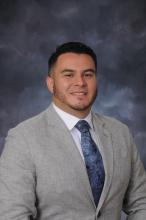Establishing the Engineering Data Fabric

With the emergence of Industry 4.0—the realization of digital transformation—many feel that engineering organizations’ data paradigm has shifted from diverse silos to truly collaborative digital engineering environments that provide an authoritative source of truth. But has this so-called transition actually broken down the silos or simply created new ones that still do little more than capture and store engineering data?
All too often, the latter is true. We need to move beyond this “capture and store” mentality to make engineering data more valuable across the enterprise, with the ability to translate between contexts and establish truly reliable sources of knowledge—with absolute security.
One smart way to reach this goal: establishing an engineering data fabric, a collection of digital threads focused on the design, implementation, manufacturing, transition, operations and sustainment of a system. The digital threads are constructed by assembling a set of models, simulations and data to answer specific engineering questions throughout the system life cycle.
Today, smart digital engineering data fabrics are based on four components: Data Governance, Semantics, Interoperability and Secured Data Management. How this approach works:
Data Governance System. Governance establishes controls on the data being created in an engineering organization, to show what it is being used for, see assumptions and limitations on how the data should be used, and how long they should trust it.
Semantic Understanding. When a user requests data, semantics ensures that it is presented in the context and digital engineering tooling relevant to the requester. For example, instead of making design engineers go into a requirements management tool, semantics ensures that they only need query or subscribe to requirements relevant to their need, in their own context and language. While semantics requires up front work to establish enterprise taxonomies and data architectures, the time spent pays dividends via a fabric that each stakeholder can understand.
Interoperable Digital Engineering Environment. Interoperability of the data fabric guarantees access to all engineering information systems, from requirements to operational data that is streamed in. Data can be traced, transformed, reasoned and queried for technical enterprise decisions.
Secured Data Management. Data management tells what data is reliable, how current it is, whether it is from the correct author, and many other key points across the data archetypes within the fabric. Security helps ensure that U.S. adversaries cannot steal engineering data or insert vulnerabilities they might leverage in the future. Zero trust provides the framework to secure the data and environment limiting access to legitimate users with appropriate rights while blockchain can validate the data provenance providing users with the assurance to trust what they receive and use.
ManTech is investing in all four components of the data fabric. We have established a Governance Guide that walks organizations through the process of building a governance system. We are actively working with partners to build a semantically interoperable digital engineering environment with associated domain ontologies and applying our experience in zero trust and blockchain to increase data management efficiency and security within the digital engineering environment.
By architecting these components into the engineering data fabric, we help our customers benefit from reliable and relevant data accessibility across the model-based enterprise, high-speed critical decision-making—and a strong return on investment.
For more information, visit https://www.mantech.com
Dr. Douglas Orellana is vice president of Intelligent Systems Engineering, ManTech.





Comments